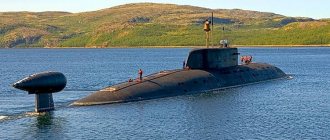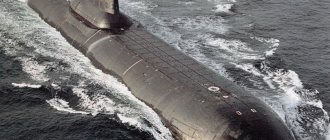Boeing 737
What kind of plane?
The Boeing 737 family is the most common group of airliners of our time. Every five seconds, one such machine takes off and lands in the world. The 737 also became the most popular turbofan passenger aircraft in aviation history. By the summer of 2015, more than 8.6 thousand of these machines had been produced, and dozens of countries around the world operate it. By 2005, 1,882 737-300/400/500 (Classic) and 1,643 737-600/700/800/900 (Next Generation) aircraft were in use. The 737 dynasty includes many airliners built at different times and with different capabilities. If the Boeing 737-100 has up to 103 passenger seats, then the largest aircraft in the family, the 737-900ER, can carry up to 215 passengers. Now they are producing a new, third generation - the Boeing 737NG (Next Generation), and its successor - the Boeing 737 MAX - will appear soon. One of the differences of the new machine will be more powerful, reliable and economical CFM International LEAP-1B engines. New composite materials will also be used in the aircraft design. Overall, the plane will become more comfortable and safer. According to Boeing management, this will allow it to successfully compete with Airbus and its new A320neo.
Safety By 2014, 177 Boeing 737 airliners were lost in disasters, and the total number of victims exceeded 3.8 thousand people. The largest crash was the Boeing 737-8HG in Mangalore (India) in 2010: 158 passengers and crew members out of 166 on board were killed. However, don't be alarmed. In the case of the Boeing 737NG, there is one accident per 17 million flight hours, and it is deservedly one of the safest airliners in the world. The lion's share of all accidents involving it occurs on budget airlines in third world countries, and the cause of disasters is most often the human factor.
Boeing 737 / ©Wikipedia
Rating of the most dangerous aircraft in the world
This rating is also based on the number of accidents and the date the model was discontinued. Many copies are still operated by low cost carriers.
Boeing 737
The Boeing 737 tops the list. There is 1 aircraft accident per 507,500 flight hours. These airliners are no longer used by major airlines, but are still in use among airlines in underdeveloped African countries.
Boeing 737
IL-76
In second place is IL-76. Basically, aircraft of this model are used in the former Soviet Union. They are even still being produced. Although there is 1 accident per 549,900 flight hours.
IL-76
Tu-154
Third place is again occupied by a model developed back in the Soviet Union - Tu-154. As it is easy to assume, only countries in the Post-Soviet space use it. There is 1 accident per 1,041,000 flight hours.
TU-154
Airbus A310
Airbus A310 is in fourth place. Decommissioned by large, international companies, this type is still used by Third World countries. For example, Yemen and Pakistan. There is 1 accident per 1,067,000 flight hours.
Airbus 310
McDonnell-Douglas DC-9
Fifth place went to the McDonnell-Douglas DC-9. Only small airlines from underdeveloped countries use it. It has not been produced since 1987. There is 1 aircraft accident per 1,068,000 flight hours.
McDonnell-Douglas DC-9
Tu-134
In sixth place is the Tu-134. This model is in use only in a few countries in Central Asia and the Middle East. 1 accident occurs per 1,087,600 flight hours. They stopped constructing them in the late 90s of the last century.
TU-134
Boeing 727
Retired by many mass carriers, the Boeing 727 has settled into seventh place. It has not been produced since 1984, since by that time there were already more advanced models. However, some charters and companies from underdeveloped countries still have this model in their fleet. There is 1 accident per 2,306,300 flight hours.
Boeing 727
McDonnell-Douglas MD-80
In eighth place was the McDonnell-Douglas MD-80. It has not been produced since the late 20th century, but is still used by airlines such as the Italian Alitalia, the American Delta and the Scandinavian SAS. 1 accident per 2,332,300 flight hours.
McDonnell-Douglas MD-80
McDonnell-Douglas DC-10
Ninth place went to the McDonnell-Douglas DC-10. It is used only by charters and cargo carriers. There is 1 accident per 2,908,800 flight hours.
McDonnell-Douglas DC-10
McDonnell-Douglas MD-11
The list is completed by a slightly improved model of the previous version of the McDonnell-Douglas DC-10 - the McDonnell-Douglas MD-11. Issue of this type ended at the beginning of the 21st century, but it is still found on such large carriers as KLM and Finnair. 1 accident per 3,668,800 flight hours.
McDonnell-Douglas MD-11
Airbus A320
What kind of plane? The second position is occupied by the no less famous A320. Recently, special attention has been focused on this aircraft, because the crashed A321 is one of its modifications. The A320 is a narrow-body passenger aircraft created by the European corporation Airbus. It became the first production airliner in history to receive a fly-by-wire control system (EDCS).
The A320 continues to be extremely popular, and by the fall of 2015, over 6.7 thousand of these ships were produced. By 2005, 2,420 different modifications of the A320 were in service. Let us add that Airbus aircraft (like Boeing) form the basis of Russian civil aviation: by this year, Russian operators operated 281 Airbuses.
The largest modification of the aircraft was the A321, which in its economy version can accommodate up to 220 passengers. The flight range in this case can reach 5600 km. The aircraft is not only very popular, but also has good prospects for the future. They are associated with a modification of the Airbus A320neo, the engines of which will be 15% more economical than those used today. The new modification boasts increased comfort for passengers, greater environmental friendliness and reduced noise levels.
Safety The safety level of the A320 depends on the modification. In total, 33 of these aircraft were lost in accidents and disasters, three of which were variants of the 321. Among the causes of disasters are terrorist attacks, equipment failure and, most importantly, the human factor. The largest tragedy involving Airbus was the recent Sinai incident on October 31, 2015: then, we recall, 224 people died. In general, the A320 is quite safe: one accident occurs every 15 million hours. This is slightly worse than the Boeing 737 (as well as a number of other passenger aircraft), but better than many airliners of its class. The new modification of the A320neo will obviously be even safer, so there is no need to be afraid of flying on this aircraft.
A321 air / ©Wikipedia
The most popular aircraft.
The Boeing 737 narrow-body passenger airliner leads the popularity and mass popularity ratings. More than ten thousand different modifications of this unit have already been produced and about 4,500 more machines have been ordered from the company for production. Next in popularity are: Airbus A320, Boeing 777, Embraer E-Jet, McDonnell Douglas MD-80.
The most popular civilian Boeing 737.
Boeing 777
What kind of plane? The Boeing 777 took third place in the popularity rating. Here we have a family of wide-body passenger aircraft that have been in operation since 1995. Until September 2015, Boeing produced 1,340 of these aircraft in various modifications, including passenger versions, a transport aircraft and one refueling aircraft. The airliner is the largest twin-engine jet passenger aircraft in operation. You can recognize it by its characteristic six-wheel landing gear. A special feature of the model was that for the first time, paper drawings were not used in its development, and all calculations were performed on a computer. In general, the aircraft has sufficient comfort and is designed for commercial flights lasting up to 18 hours. Capacity, depending on the modification, varies from 300 to 400 passengers in three classes.
Safety Until 2014, the Boeing 777 was the safest aircraft in the world: one crash occurred every 20 million hours. But in March 2014, Malaysia Airlines Flight 370 mysteriously disappeared over the waters of the Indian Ocean, and in July of the same year, the same plane (also from Malaysia Airlines) was shot down in the skies over Donbass. All this has spoiled the reputation of the Boeing 777, and yet it remains an extremely reliable machine. In the foreseeable future, Boeing will begin production of a new modification of the 777X, the level of safety of which will be even higher.
Boeing 777-312ER Singapore Airlines / ©Boeing
Airbus A330
What kind of plane? The Airbus A330 is a wide-body passenger aircraft that has been in active use since 1994. By the fall of 2015, 1,224 such airliners had been produced, both civilian and military. The former include the A330-100, A330-200, A330-200F, A330-200HGW, A330-300 and A330 P2F. The Russian Aeroflot operates 22 A330-200 and A330-300 aircraft. The capacity of the latter is 335 passengers in two classes or 295 in three. The planes make long-distance flights from Moscow to Japan, Thailand, the USA, China and other countries. The newest aircraft model is called A330-300X.
Safety The A330 airliner is quite reliable: 14 million hours per accident. The aircraft has suffered two major disasters. The first occurred in 2009 over the Atlantic Ocean, the second in 2010 in Tripoli. The disaster over the Atlantic took the lives of 228 people - everyone on board died. The incident was not only the largest tragedy involving an A330, but also the largest in the history of Air France. The cause of the incident, experts said, was the freezing of the pitot tubes, the subsequent shutdown of the autopilot and the ill-considered actions of the pilots.
Airbus A330 / ©Airbus
Boeing 747
What kind of plane? The giant Boeing 747 made its first flight back in 1969, but even now continues active flights. By the time of its birth, it had become the largest airliner in the world (today the Airbus A380 holds the palm). The high cost of the aircraft and its operation is offset by the benefits of mass air transportation. The 747-400ER modification can accommodate up to 524 passengers in two classes or 416 in three. It was the 747-400 modification, by the way, that became the best-selling. The latest version of the legendary aircraft, the Boeing 747-8, first took to the skies in 2010. By 2015, over 1.5 thousand of these machines were produced, of which just over a thousand were flying by the mid-2000s. Of course, now there are much more economical and technologically advanced passenger aircraft, but the 747 continues to be actively used on busy and long transcontinental routes.
Safety As one might expect, the fate of the 747 turned out to be eventful and complex. So far this year, 59 of these ships have been lost in accidents, and 3,732 people have become victims of aviation accidents. The Boeing 747 airliner was also responsible for the worst air disaster in history. We are talking about a collision at Los Rodeos airport, when two Boeing 747 aircraft from KLM and Pan American collided on the runway. The result was the death of 583 people. True, the cause of the tragedy again turned out to be the notorious human factor: the pilots misunderstood the dispatcher’s command, although, in general, the accident occurred due to a combination of circumstances that were difficult to predict.
The last major crash involving a Boeing 747 occurred over the Taiwan Strait in 2002. Then, due to mechanical wear and poor repairs, the plane disintegrated in the air, killing all 225 people on board. The tail section of the vehicle came off in flight, and the plane broke up so quickly that the crew did not even have time to contact the ground. The 747's accident rate doesn't seem that high when you consider how many planes were built and how many flights they flew. One accident occurs every 17.5 million hours, so the airliner can deservedly be proud of the title of one of the safest winged aircraft in the world.
Boeing 747-400 / ©Boeing
What is Boeing accused of?
At the moment, there is no reason to blame the corporation, since the investigation into the plane crashes has not been completed.
At the same time, pilots pay attention to the strangeness: the Boeing company, before the disaster in Indonesia, did not actually inform the pilots of the MAX airliners about the operating features of the MCAS system. As a result, the collision with it was a surprise for many crews. According to one version, in two cases the pilots’ unpreparedness to meet a technical novelty ended in failure.
Boeing 767
What kind of plane? The Boeing 767 has been in service since 1982. During this time, they managed to produce 1081 pieces. The wide-body airliner is being built in several modifications, including passenger aircraft and one transport. While other second-generation wide-body airliners (such as the Airbus A300) have almost disappeared, the Boeing 767 continues to be actively used. Experts have calculated that over all time, various modifications have transported 795 million people, performing 4.8 million commercial flights. The most spacious modification, the 767-400ER, can carry up to 375 people. This option will cost the customer $200 million.
Safety One of Air Canada's Boeing 767 airliners received the nickname "Gimli Glider" because it was able to fly more than 120 km without fuel and make a successful landing. Everyone on board the flight survived, and the plane was restored and returned to service. In total, 17 such vehicles were lost, and 851 passengers and crew members died in accidents. The most famous tragedy involving a vehicle of this type was the terrorist ramming of the World Trade Center tower on September 11, 2001. However, it is unreasonable to attribute the incident to the airliner itself - it is considered reliable and proven: according to statistics, one disaster occurs every 15.5 million hours.
Boeing 767 / ©Wikipedia
Boeing 757
What kind of plane? In the penultimate position of the rating is the twin-engine narrow-body passenger aircraft Boeing 757, produced from 1982 to 2004. During this time, they managed to build 1,050 airliners, of which, as of 2005, about a thousand were in operation. The aircraft turned out to be very successful commercially and brought Boeing multibillion-dollar revenues. There are two main passenger modifications of the car: 757-200 and 757-300. The 757-200 variant is the most common and can accommodate up to 235 passengers. But the largest modification of the 757-300 carries up to 280 passengers, and even in an increased comfort cabin, conceptually close to that used on Boeing 737NG models. There is also a transport option - the 757-200F, which is capable of carrying up to 39 tons of cargo.
Safety We have before us another Boeing creation that is very successful in every sense: one accident occurs every 14 million flight hours. During all the years of use of the 757, only eight such machines were lost. Moreover, the aircraft accident rate could have been even lower if not for the September 11 terrorist attacks, when terrorists hijacked two of these aircraft. One of them (tail number N644AA) was sent by militants to the Pentagon building, the other (tail number N591UA) crashed in a field when the passengers resisted the invaders. The worst disaster in the history of the Boeing 757 was the tragedy near Puerto Plata (Dominican Republic), when 189 people died. The cause of the disaster was... a hornet's nest in the pitot tube device, due to which the operation of the speed indicators was disrupted. This led to incorrect actions by the crew. Once again, people were to blame, not mechanisms.
Boeing 757-200 / ©Wikipedia
What are the causes of disasters?
At the moment, there is no final data either on the disaster in Indonesia, where the investigation is ongoing, or on the disaster in Ethiopia, where it has just begun.
What is alarming is that both disasters have a lot in common: the airliners crashed shortly after takeoff, the pilots reported some problems and asked permission to return to the departure airport, in both cases there were altitude jumps before entering the peak.
In November 2022, Bloomberg, citing a source, reported that Boeing Corporation intends to send a warning to Boeing 737 MAX operators, which states that erroneous data in the flight control system on MAX modification aircraft could lead to a steep dive. The US Federal Aviation Administration (FAA) issued a directive based on Boeing's research. According to the document, the Boeing 737 MAX encountered certain nuances related to the Angle Of Attack (AOA) sensor. This sensor determines how far the aircraft's nose is tilted up. This is necessary in order to prevent the aircraft from reaching critical angles of attack, which leads to a lack of engine power and a subsequent stall during the dive.
“If the autopilot receives inflated angle of attack data from the sensor, there is a high probability that the computer will begin to send signals to the horizontal stabilizer to go into a dive. It becomes more difficult for the crew to control the aircraft. The situation could result in a large loss of altitude,” the directive said.
On November 10, 2022, Boeing sent additional clarification to operating companies.
“The MAX generation 737-8/-9 models have MCAS: a system for improving pitch performance when flying with the wing high-lift devices retracted and at increased angles of attack,” the letter said. — This system issues commands for portioned deflection of the stabilizer during dives during turns with large bank angles, as well as when flying with the mechanization retracted at speeds approaching stall speed. The system only operates when the autopilot is turned off and is designed so that its actions can be overridden either by using the trim button on any pilot's control wheel, or by turning off the stabilizer control motor using switches on the center console."











